Dog’s Best Friend
Dog’s Best Friend


Why is he here?
Why is my dog lying at my feet in the shape of a croissant as I write this? How have I come to cherish his warm but lightly offensive pungency? How has his fish breath become a topic of humour when friends call round for dinner? Why do I shell out more than a thousand pounds each year to pay for his insurance? And why do I love him so much?
Ludo is not a special dog. He’s just another Labrador retriever, one of approximately 500,000 in the UK (he’d be one in a million in the United States, the most popular breed in both countries). Ludo has a lot in common with all these dogs. He loves to play ball; obviously he’s an expert retriever. He could eat all the food in the universe and leave nothing for the other dogs. He is prone to hip dysplasia. He looks particularly attractive on a plush bed in a centrally heated house very far from the Newfoundland home of his ancestors.
But of course Ludo is a unique animal to me and the rest of his human family. He is now an elderly gentleman aged twelve and a half, and we would do almost anything to ensure his continued happiness. We willingly get drenched as he tries to detect every smell on Hampstead Heath. We schedule our days around his needs – his mealtimes, his walks, the delivery of his life-saving medication (he has epilepsy, poor love). We spend a bizarrely large amount of our disposable income on him, and he never sends a card of thanks. (If you’re reading this at a point where you’re thinking of getting your first dog and consider a purchase price of £1,500 a little dear, then all I can say about the costs to come – vets, food, dog-sitting, accoutrements both essential and superfluous – is ha ha ha.)
Not long ago I visited a festival named Discover Dogs in east London to watch dogs perform agility and obedience tests in a ring, and I had the chance to meet 200 different breeds, some of whom fitted in my small backpack and some who would have trouble fitting in my car. I also had the opportunity to buy a vast amount of dog-related paraphernalia and crap, the majority of which is not of course for dogs but humans, including oil paintings, clothing and dog-related homeware, and teeshirts with slogans such as ‘Dogs make me happy, you not so much’ and ‘I’d rather be walking my Schnauzer’).
To compensate for the fact that family pets were not allowed at this event, the following Friday Ludo attended a screening of Rocketman at the Exhibit cinema in Balham, south London. Although no particular fan of Elton John (he likes listening to anything really, so long as it doesn’t sound like a vacuum cleaner), Ludo enjoyed his own seat next to mine, with a blanket and ‘pupcorn’ treats. All the dogs at this screening gained free admission ‘in exchange for cuddles with the team’, and the lights stayed a little higher during the screening so as not to distress them.
Actually, that seems like a long while ago now. I completed my new book during the virus-haunted days of mid-2020, and Ludo is the only presence in our house not looking anxious. Instead he is exhausted. It has already become a cliché to observe that the pandemic has been perversely kind to dogs: they are seldom home alone now, and they are walked almost more than they can bear. Dog owners who live alone are more grateful than ever for the company and comfort. Friends and neighbours want to borrow him: if you have a dog, you have a reason to be out. Rescue shelters report a surge in enquiries, and alas will soon be inundated with dogs whose owners – desperate for companionship during the pandemic – find themselves quite unable to cope with the demands and skills that full-time dog ownership requires. The venue which only a few months earlier hosted Discover Dogs is now a temporary 4,000-bed hospital. Social media is awash with COVID-19 dog videos and cartoons: the sports commentator Andrew Cotter has made stars of his lovely labradors Olive and Mabel as they battle for lockdown supremacy.
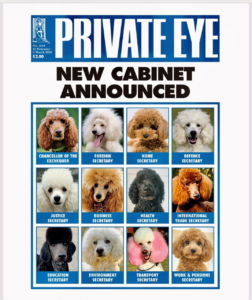
How did we get here, to the point where the dog is top dog? How did we arrive at the moment when a dog goes to the cinema? How and when did we realise that dogs would assist humans not only in hunting, but also in bomb disposal and cancer detection? With what degree of quiet acquiescence did humans roll over and accept that our domestic lives – our work hours, the cleanliness of our rugs, our holiday choices – were henceforth to be determined by the demands of an animal that used to live outside and fend for itself? When and why did the sofa replace the scavenging?
(Maybe the experience of going to the cinema with your dog isn’t so new after all. Here’s a joke from the 1990s: ‘The last time I went to the cinema there was a woman there with her dog. The dog laughed all through the film, but when the hero died at the end he was in tears. When it was over I went up to the woman and said I thought her dog was extraordinary, and how I’d never before seen a dog enjoy a film so much. “I’m as amazed as you are,” she said, “because he really hated the book.”’)
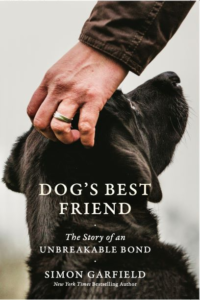
This book examines how this strongest of interdependent bonds has manifested itself over the centuries, and how it has transformed so many millions of lives, human and canine. If it is at least partially true, as Nietzsche claims, that ‘The world exists through the understanding of dogs’, then perhaps it is also partially true that a study of dogs may provide a valuable insight into ourselves.
The anthropomorphism of dogs is not a new phenomenon. I have a photo on my desk of a black Labrador from the nineteenth century dressed as a lord in a suit and top hat (and smoking a pipe). Talking dogs have been a mainstay of the movies almost from the birth of talking movies. But the collusion of dog and human has never been so abundant, imaginative and unnerving as it is today. The nature of our bond – our commitment to each other – appears to have deepened markedly in the past fifty years, not least because our scientific understanding of the dog has been enabled by advances in genetics, and our sociological interpretation of a dog’s behaviour has led to more avenues for joint engagement. Like dancers emboldened by drink and tenacity, we are entwined with our best friends in an ecstatic embrace.
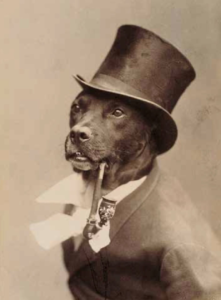
The names we give our dogs are increasingly names we would give to our children. For every old Fido we have a new Florence, for every old Major we have a new Max. This was not the case thirty years ago. Today the new names are the names of human heroes. Nelson is still popular; soon we will see a lot of Gretas. You have a female dog called Taylor, you will have a male one called Swift. Lawyers like to call their dogs Shyster, and architects favour Zaha, and there are an awful lot of young Fleabags in the parks these days. Only in rap music does it work the other way: Snoop Dogg, Phife Dawg, Nate Dogg, Bow Wow. Standing apart as it always does, the British royal family has its own special way with the naming of dogs, most of them corgis, of course, but also some dorgis and Dandie Dinmonts in there too: Kaytop Marshall, Rozavel Crown Princess, Geordie, Jolly, Sweep, Svottholme Red Ember of Lees, Smoky, Penmoel Such Fun of Rivona, Dime, Dawn, Dipper, Disco.
We increasingly use dogs to describe ourselves. A tough radio interviewer is a Rottweiler, a soft one a poodle (or a puppy). Friendly, faithful characters in novels are cuddly Labradors. Venal men in the city are pit bulls. A person who won’t let go fights like a terrier, while a detective pursues her prey like a bloodhound. You get the idea. You get the idea because you are as fleet as a whippet and smart as a sheepdog.
And we have long used our canine friends to describe our actions and emotions. After working like a dog we are dog-tired. We get drunk as a skunk but we drink the hair of the dog. Books containing doggerel get dog-eared. We root for the underdog, we bark up the wrong tree and then we’re in the doghouse. A depression is a black dog, and we’ll sport a hangdog countenance. A dog’s breakfast is followed by a dog’s dinner, but the dog ate my homework so I’ve gone to the dogs. These kinds of lists used to be the cat’s pyjamas but now they’re the dog’s bollocks. And we have sex in a position so popular among dogs that they have officially trademarked the style.
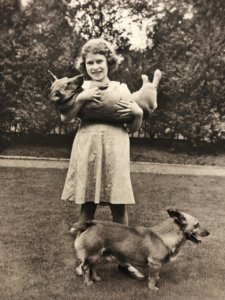
Even if you have never owned a dog, and even if you have only watched Crufts on television, you will know that our relationship with dogs is a rich, diverse, perplexing and complicated one – as rich, diverse, perplexing and complicated indeed as the relationship we have with other humans. Dogs are increasingly not just part of the home but part of the family, the closest connection we dare have with a species not our own.
My own book is primarily a celebration of dogs in all their intelligence, curiosity, beauty and loyalty. Would dogs write a similar appreciation of humans, I wonder? We shall indulge in dog stories reassuring and absurd, warming and alarming, funny and severe. But the book will also pose a few difficult questions about the way humans now treat our great canid friends, and where this may be leading us. It questions, for example, whether the natural love we have for our beloved pets isn’t spilling over into disrespect, and our love of variety and novelty into exploitation. All the breeders I talked to are worried about the future. Have we forgotten where dogs came from and how they used to live? Do we always provide the best life for them, as opposed to the best life for us? And are we in danger of losing what the canine psychologist Alexandra Horowitz has called ‘the dogness of dogs’?
At the core of this book is one leading question: how did we get from hunting with the Eurasian wolf (among other species of Canis lupus), to buying an electrically heated daybed for the Cavalier King Charles spaniel (among other breeds of Canis lupus familiaris)? The journey is cultural and scientific, and takes us to Australia, Japan, the United States and, almost inevitably, to Crufts at the Birmingham NEC.
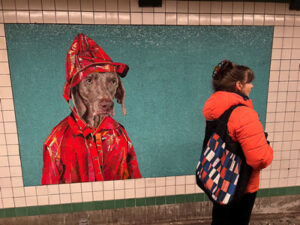
En route I will attempt to explain the origin of the cheagle (the chihuahua and beagle cross) and the chiweenie (chihuahua and dachshund), and the very notion of the designer dog. The book will revisit the sequencing of the first complete dog genome, and will consider the most significant recent experiments and theories from the science journals. It will ask whether Charles Darwin shouldn’t be as well known for his work on dogs as he is for his work on evolution, and it will examine why Charles Dickens wanted to buy a gun to shoot dogs at random. It will explore a secluded dog cemetery and other ways we choose to memorialise our beloved pets. It will also try to understand why prints of dogs playing poker were once bestsellers.
One of the many things that attracts us to a puppy – beyond their all-round damn helpless cuteness – is their inquisitiveness. Puppies like poking around in things, any thing. This inquisitive- ness matures, but it doesn’t depart: older dogs hear an irregular noise, they still want to investigate. Perhaps one could regard this book as a dog discovering the world around it: irregular noises, a rapidly changing environment and an increasingly large amount of attention from complete strangers. These strangers are us, also acting at our most puppyish, discovering with increasingly forensic precision just what it is that makes a dog a dog, and makes them such mutually life-enriching companions.
